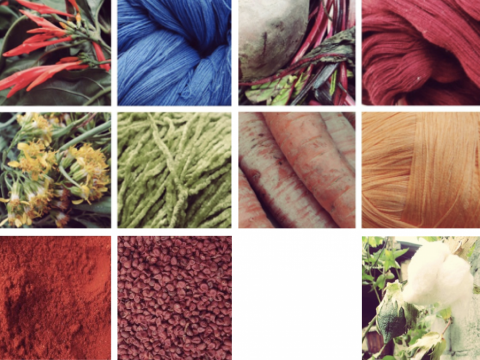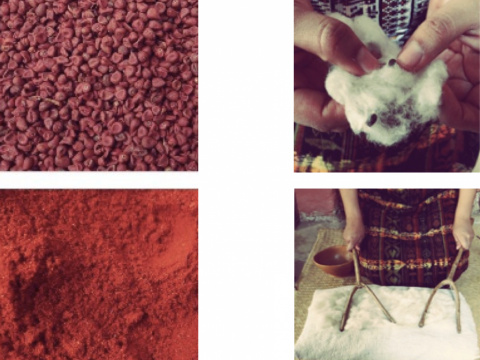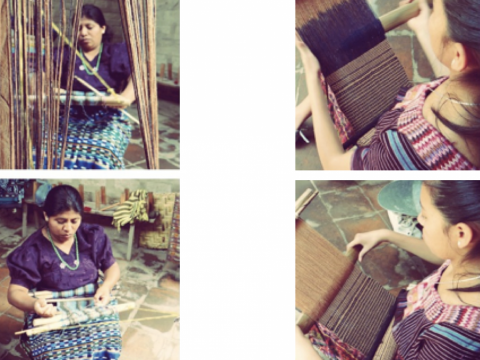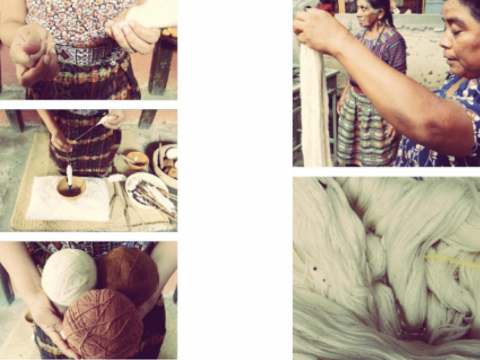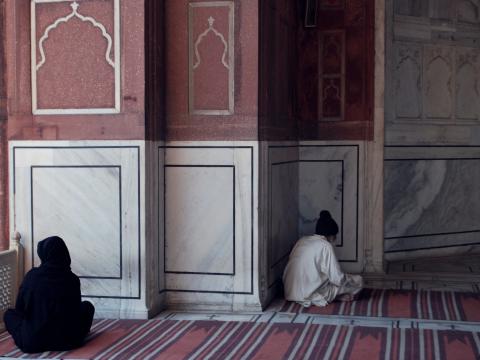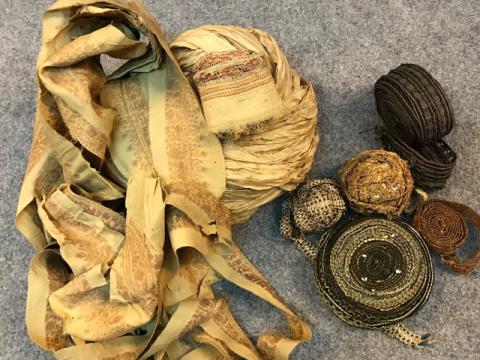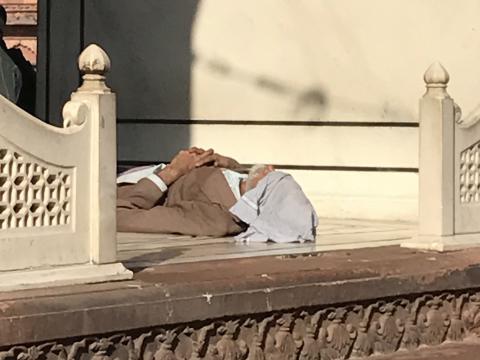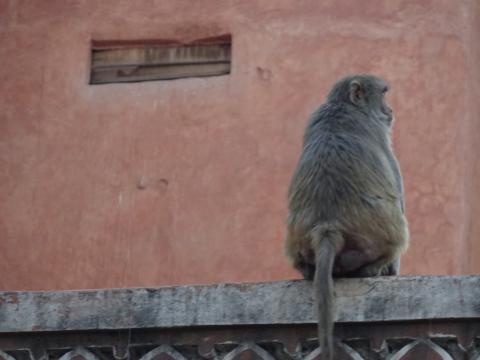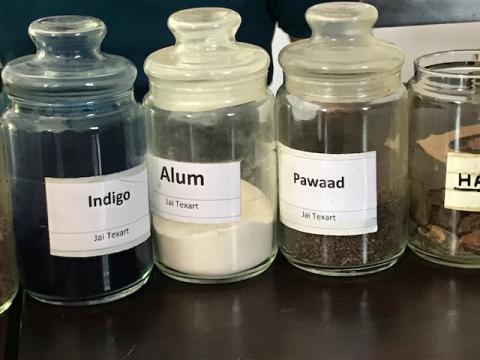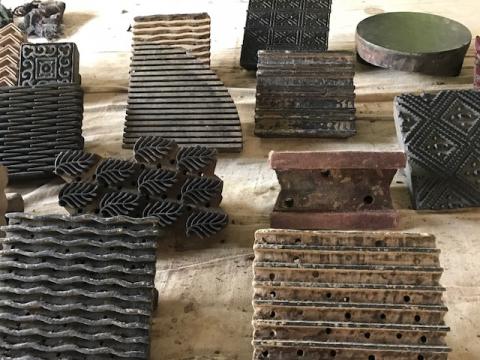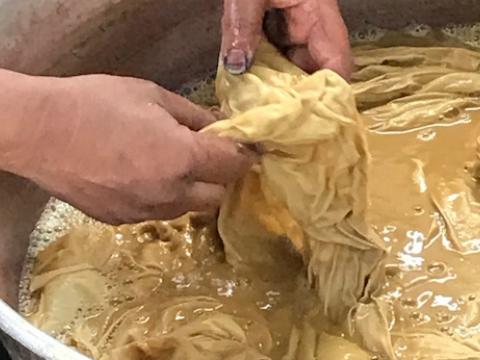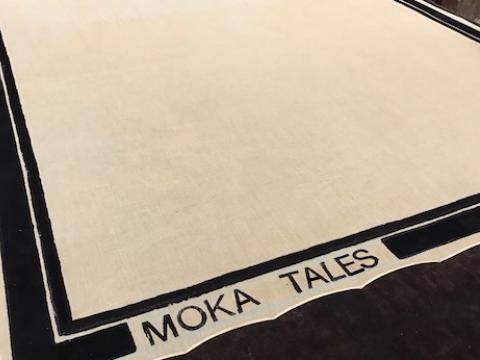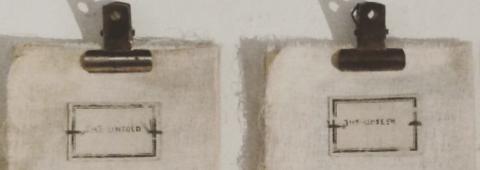

Dedication to authenticity
Crossing Guatemala with no plan at all, we came across marvelous landscapes and most of all genereus and warm
Indigenous people who were proud to share with us their most traditional techniques in weaving, dying and knotting.
Creating employment opportunities for Indigenous women artisans over 100 communities around Lake Atitlàn are providing
a livelihood and ensuting children can attend school.
All of their products are one-of-a-kind handmade from 100% organic cotton that is mostly grown in the local mountains
They must turn the cotton into chread and color it using natural pigment derived from locally found plants, herbs, fruits and vegetaties.
All of the methoden used in creating the fabrics have been passed down from Mayan ancestors for many generations.
The process
A the first step is to pick the cotton. Every woman has her own cotton tree plant both in their homes or in the mountains. There are 4 different colours of cotton in the world but only 3 of them can be found around Lake Atitlàn
B The cotton is gathered and miscellaneous leaves and seeds are picked out. These seeds are later used to grow new cotton plants
C After the cotton is separated, ti's pulled apart slightly to make a thin web. This web is beaten for 20 min resulting in a softer and scooter texturen, preparing the cotton to spun. The yard is spun into a ball. 1 ball of 500g takes 15 hours of work
D The cotton then is dyed following ancient Mayan techniques, using pigments exclusively extracten from natural products like fruit, vegetables, seeds, flowers, tree bark and the cochineal which is an insect that lives in cactuses. To ensure that the colors adhere and that they do not run or fade, a liquid extracted from banana tree bark is then mixed up with the pigment
E After the dying procedure, the cotton is washed with water and soap to clean it from excessieve colour and is finally ready for the weaving loom. It takes a weaver about 20 hours to intricately weave a scarf and up to 2 months to make a table cloth of 200x150 !
India country of contrasts, colors & creativity
lyrics by Babetcetera
Where nothing is overlooked. No corner leaving us untouched
The most unexpected color palettes and patterns,
shapes and textures blending into a poetic landscape
The winds of change taking us along
The small streets whispering stories
Where old and new, tradition and modernity, beauty and chaos merge into one picture.
Different parts showing that there are no parts apart from the whole
Where all our senses are triggered.
The noise, the dust, and the dirt being as much part of the scenery
as the scent of tea and the bohemian skies lifting our spirits
Where creativity is celebrated, ancient crafts preserved and reinterpreted
People creating so much with so little means,
challenging their precision and inventiveness.
Where new horizons are rising.
Social enterprises responding to the needs of their country,
giving chances to minorities, and building hope.
Where our journey begins…
As is the thing with inspiration, there might be a beginning, there is no end...
Pink city & patterns
words by Babetcetera
Finding ourselves in between beauty and chaos in Jaipur’s pink city -which isn’t pink by the way, but rather faded yellow- we head to the countryside just outside the bursting city. Few steps away we find the city of Bagru, Rajastan’s centre for hand block printing and natural dyes. Eager to learn more and to submerge ourselves in the world of handicrafts, we subscribe for a workshop at Jai Texart. We are introduced to all kinds of natural dyes, the region’s rich cultural heritage, and we get to know the passionate brothers, who found their Nirvana in this labyrinth of patterns and in social entrepreneurship. Profound believers of the fact that by sustaining tradition and celebrating their people’s skills, they can bring about innovation, not only socially empowering women, but also ecologically, using nature only, and taking into account the environment in their production process.
Before we know, we are immersed into the elaborate process of block printing, its age-old techniques and printing our own scarf.
First we are taught how colours are extracted from nature out of vegetables, animals and plants. If it wasn’t for the textiles and patterns surrounding us, we could think it was a cooking class, as the ingredients used were laying on the table. Turmeric for orange, pomegranate for red…And as we were introduced to the secret -often strange!- recipes. The colour black for example is made from horseshoes and sugar cane left in a pot with water for 30 days?! Speaking of alchemists...
Then we are guided through the different steps that are needed to prepare the fabric. Before it is printed, the fabric is first washed, second it is soaked in cold water and harda powder, extracted from the fruit, for the cotton to fully absorb the color dye. Third, we lay it to dry in the sun.
The dried fabric is then stretched and pinned onto a printing table. After choosing the color and our designs from a library of patterns carved in wood, and a little sketch, challenging our creativity, the real work can begin. We are shown the printing technique, requiring care and skill! The stamp is placed from left to right and after the back of the stamp is slammed hard with the fist for a good impression. Important! We always work from the middle towards the edges. If we choose a multi-coloured pattern, we first use the outline block and after the filling block to fill it with another colour.
When the designing is done, the fabric is sun-dried again, washed and boiled with flowers from the Dhaura tree to fix the colours to the fabric. Then we leave it to dry one last time in the sun.
Done! The generosity of nature towards those who are patient…
The combinations of patterns and colours are endless, the result different every time. As in nature...their beauty resides in tiny imperfections. Like that pinkish colour our scarf had instead of white because something went wrong in the colour-fixing process … At least we saw some pink in Jaipur after all.
